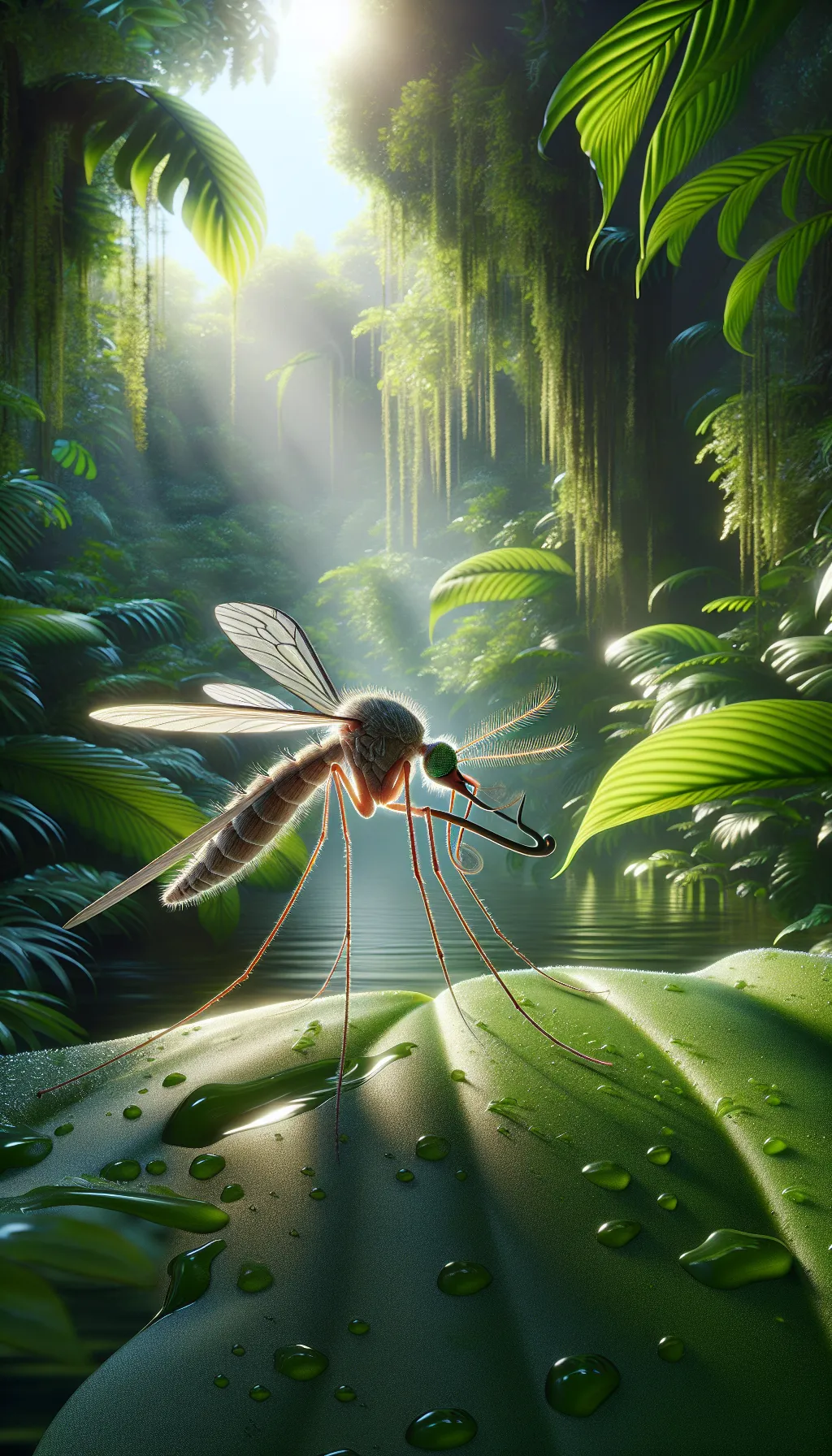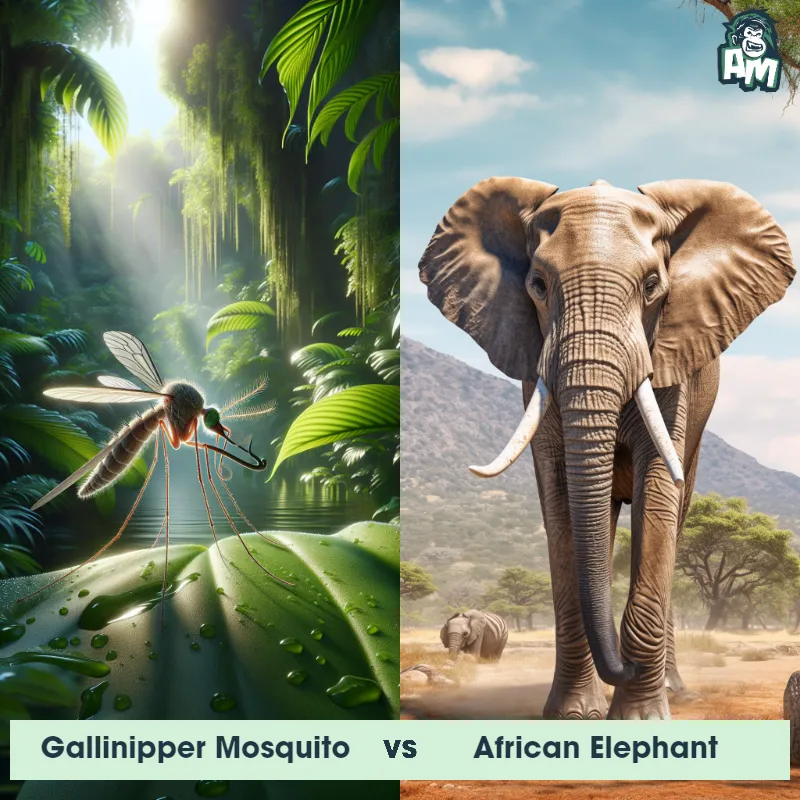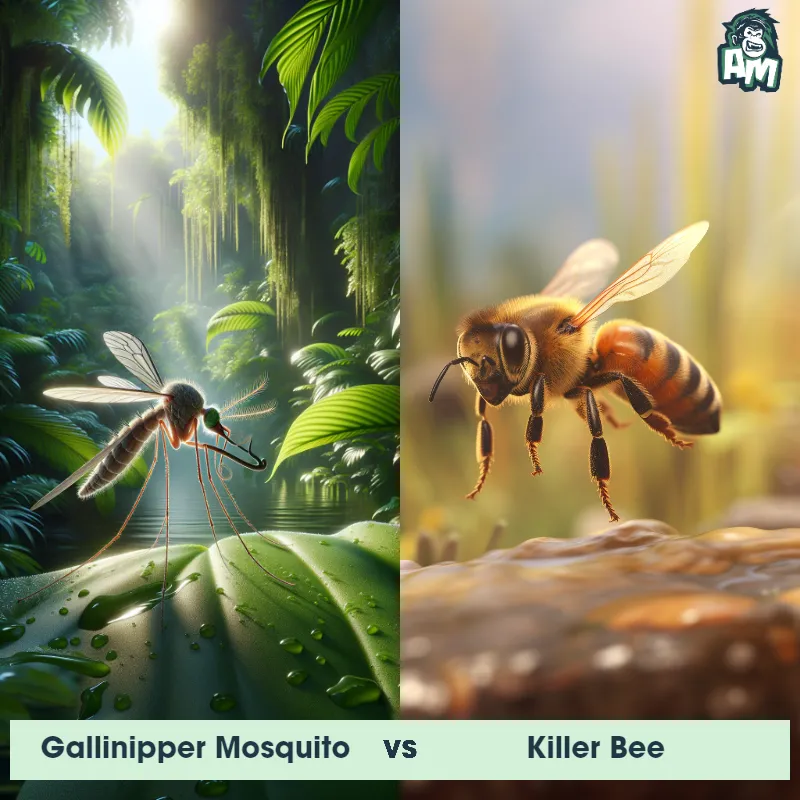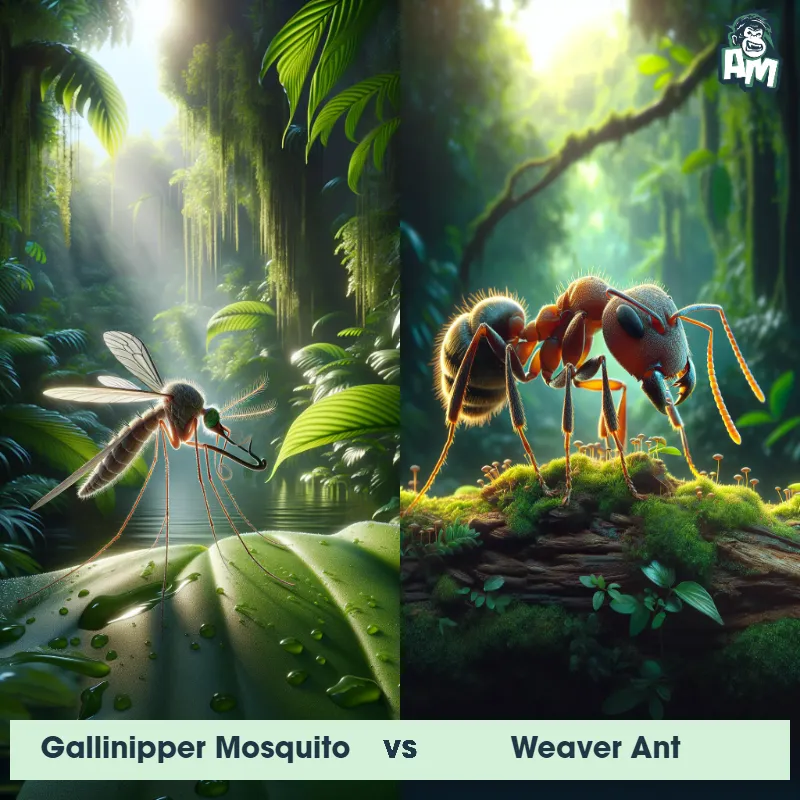The Gallinipper Mosquito
The Gallinipper Mosquito, also known as Psorophora ciliata, is a large, intimidating mosquito species found in the United States. This mosquito is known for its size, with females measuring up to 1.5 inches long, making them one of the largest mosquitoes in North America. They have stout bodies with long, spindly legs and dark brown to black coloration. Unlike other mosquito species, the Gallinipper Mosquito has a loud, powerful buzz that can be heard from a distance. Females are known for their painful bites, which can be quite bothersome to humans. These mosquitoes are typically found near bodies of water, particularly in areas with abundant rainfall.

| Gallinipper Mosquito | |
|---|---|
| Size | Up to 1.5 inches (3.8 centimeters) |
| Weight | Not applicable |
| Speed | 1.5 mph (2.4 km/h) |
| Key Strength | Unknown |
| Biggest Weakness | Unknown |
| Scientific Name | Psorophora ciliata |
| Family | Culicidae |
| Habitat | Flood-prone areas |
| Geography | Various parts of the United States |
| Diet | Blood-feeder |
| Lifespan | 1 weeks - 4 weeks |

The Gallinipper Mosquito
The Gallinipper Mosquito, also known as Psorophora ciliata, is a large, intimidating mosquito species found in the United States. This mosquito is known for its size, with females measuring up to 1.5 inches long, making them one of the largest mosquitoes in North America. They have stout bodies with long, spindly legs and dark brown to black coloration. Unlike other mosquito species, the Gallinipper Mosquito has a loud, powerful buzz that can be heard from a distance. Females are known for their painful bites, which can be quite bothersome to humans. These mosquitoes are typically found near bodies of water, particularly in areas with abundant rainfall.
Fun Fact: One remarkable fact about the Gallinipper Mosquito is that its larvae can survive drought conditions by entering a state of suspended development known as diapause, where their metabolism slows down until favorable conditions return, allowing them to wait for months or even years before hatching.
| Gallinipper Mosquito | |
|---|---|
| Size | Up to 1.5 inches (3.8 centimeters) |
| Weight | Not applicable |
| Speed | 1.5 mph (2.4 km/h) |
| Key Strength | Unknown |
| Biggest Weakness | Unknown |
| Scientific Name | Psorophora ciliata |
| Family | Culicidae |
| Habitat | Flood-prone areas |
| Geography | Various parts of the United States |
| Diet | Blood-feeder |
| Lifespan | 1 weeks - 4 weeks |
Gallinipper Mosquito Matchups
We use AI to simulate matchups between the Gallinipper Mosquito and other animals. Our simulation considers size, strength, and natural predatory behaviors to determine the most likely outcome.
Gallinipper Mosquito: Diet, Predators, Aggression, and Defensive Behaviors
What do Gallinipper Mosquitoes eat?
Gallinipper mosquitoes are aggressive feeders and primarily feed on vertebrates, including mammals such as humans, livestock, and wildlife. They also feed on reptiles, birds, and amphibians.
Do Gallinipper Mosquitoes have any predators?
Gallinipper mosquitoes do have predators in their natural habitats. Predators of gallinippers include birds, bats, frogs, spiders, and other insects. These predators help control the mosquito population in their ecosystems.
Are Gallinipper Mosquitoes aggressive?
Yes, Gallinipper mosquitoes are known for their aggressive biting behavior. They are one of the largest and most aggressive mosquito species, known to bite not only humans but also other animals.
Do Gallinipper Mosquitoes fight?
Gallinipper mosquitoes do not engage in physical fights with each other. However, they may compete for food sources and breeding sites, leading to competition among individuals.
How do Gallinipper Mosquitoes defend themselves?
Gallinipper mosquitoes defend themselves by using their sharp mouthparts to pierce the skin of their hosts and feed on their blood. They also have the ability to fly quickly and evade potential threats.
What is the biggest weakness of Gallinipper Mosquitoes in a fight?
The biggest weakness of Gallinipper mosquitoes in a fight is their relatively large size and slow flight speed compared to other mosquito species. This can make them more vulnerable to predators and environmental threats.
Fun Fact: Another interesting fact about Gallinipper Mosquito is that they are attracted to carbon dioxide, heat, and movement, making them highly skilled at locating potential hosts such as humans and animals. They can detect their prey from quite a distance away, enabling them to track down warm-blooded creatures even in open environments.
Fun Fact: The Gallinipper Mosquito has a unique breeding strategy wherein female mosquitoes lay their eggs in low-lying areas that frequently flood, such as ditches, floodplains, or fields. The eggs are able to withstand the drying out of the habitat, and once the area gets flooded, the eggs hatch, leading to an abundance of larvae ready to develop into adults. This reproductive strategy allows for a rapid increase in mosquito populations following heavy rainfall events.














